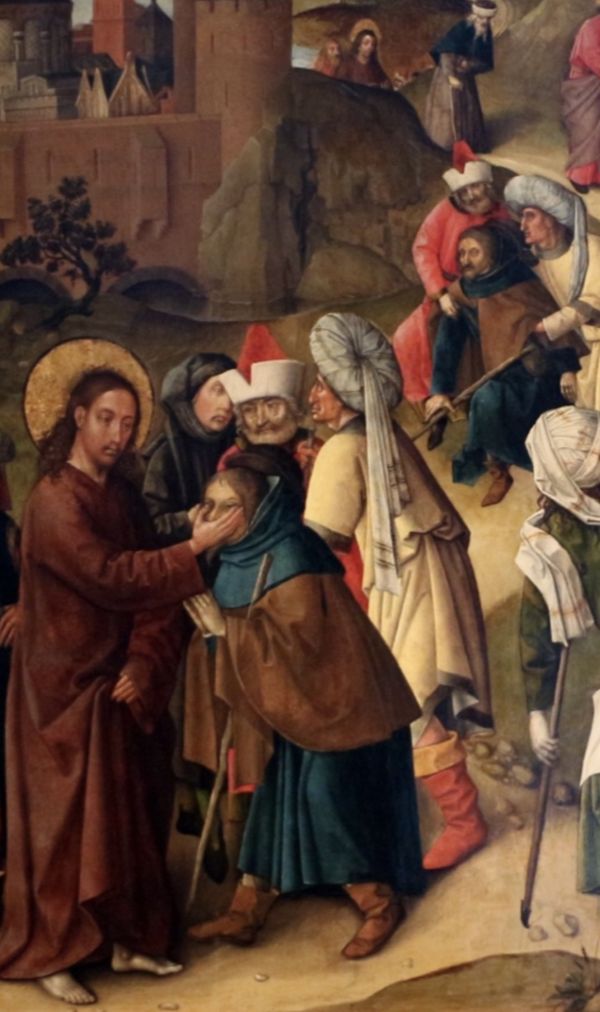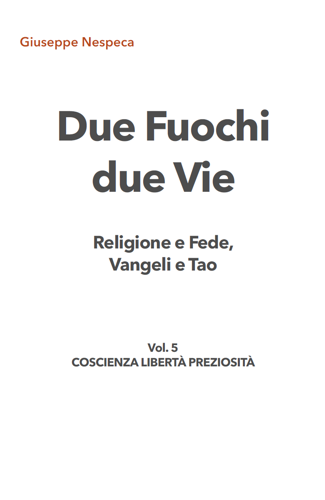(Mk 10:46-52)
The passage in Mk is the agile fruit of the interweaving of a catechesis explaining the immediately preceding passage [the Apostles' aims] and the teaching on the very first forms of baptismal liturgy reserved for the new believers, called 'photismòi-enlightened' [those who from the darkness of pagan life finally opened their eyes to the Light].
The passage illustrates what happens to a person when he meets Christ and receives his existential orientation: he abandons established but not personally reworked positions, and becomes a critical witness.
The narrative is set on the comparison between downward material gazes (such as those of pagans or arrogant followers) and open gazes, capable of lifting the human eye from the fetters of semblance, habit, and destructive outer or inner powers.
What, then, is needed to see with the perception of God, beyond appearances, and to lift oneself up from a grey life of handouts, literally on the ground? How to heal the vision of those who are disoriented?
Bartimaeus [verbatim, the 'son of the valued one'] represents us: he is not a free man, capable of activating himself - but influenced by a frantic search for prestige and recognition.
The «son of the honoured man» is not biologically blind, but one who adjusts himself haphazardly. He is unable to «look up» [the Greek key-verb in vv.51-52 is aná-blépein] because he does not cultivate ideals; he is content with what the environment around him grants, which anaesthetizes him.
If one finds oneself at this level of myopia, it is better to 'lift one's gaze' bent over one's navel for ridiculous and short-sighted things.
Bartimaeus is a man of habit, he is accompanied to the same places every day by the same people.
He is standing still, «sitting» (v.46) at the edge of a road where people are moving forward and not just surviving resignedly, as he does.
Bartimaeus types expect everything from the recognition of others; they live only by begging. They repeat words and gestures that are always identical.
Their horizon at hand does not allow them to enter the flow of the Way where people are busy building, evolving, expressing themselves, providing for their less fortunate sisters and brothers.
An existence dragged along the fringes of any interest, other than one's own lazy pouch.
They live off the movement of others; they feel gratified by the petty benevolences and opinions bartered by those who pass by, by ideas that are never sifted and made their own.
But the Word of the Nazarene triggers the indolent. And his new attitude becomes that of the 'newborn'. In this way, he engages in an industrious, creative, practical - futuristic model of life.
He rises again dynamically, getting rid of the rags on which he expected others to lay something in his favour.
The old garment ends up in the dust - cast far away as in the ancient baptismal liturgies: at any age it undertakes, outclassing small cabotage securities.
He changes his life, looks it in the face; even though he knows he is complicating it, making it challenging and countercurrent.
Personal contact with Jesus corrected his gaze, made him regain his ideal perspective.
Now he understands the primordial and regenerating - indeed, recreating - sense of the Newness of God.
The face-to-face Meeting gave him a diametrically opposite model of a successful man; not subservient to tactics.
In short, Jesus corrects the inert myopia of those who are fond of their mediocre place.
Religiousness or personal Faith: the choice is decisive.
It means lazily adapting to fashions of circumstance or the old dress of already “said” behaviours and usual friendships, just waiting for some solution-lightning that does not involve too much…
Or leave there, reinvent their lives, abandon the 'mantle' [cf. Mk 10:50] on which comments and common mites were collected.
By opening his eyes and «lifting them up», as an already divine man would do. Pocketing nothing but pearls of light, instead of handouts.
On muddy roads we may get dirty and be uncertain, but we can proceed there in the movement of Christ's priesthood, with sound perception.
In fact - as in this episode - the Gospels not infrequently insist on the (devoutly absurd) criterion that the enemy of God is not sin, but the 'average, passive life' of the «honoured man», identified and placed.
[30th Sunday in O.T. (year B), October 27, 2024]












